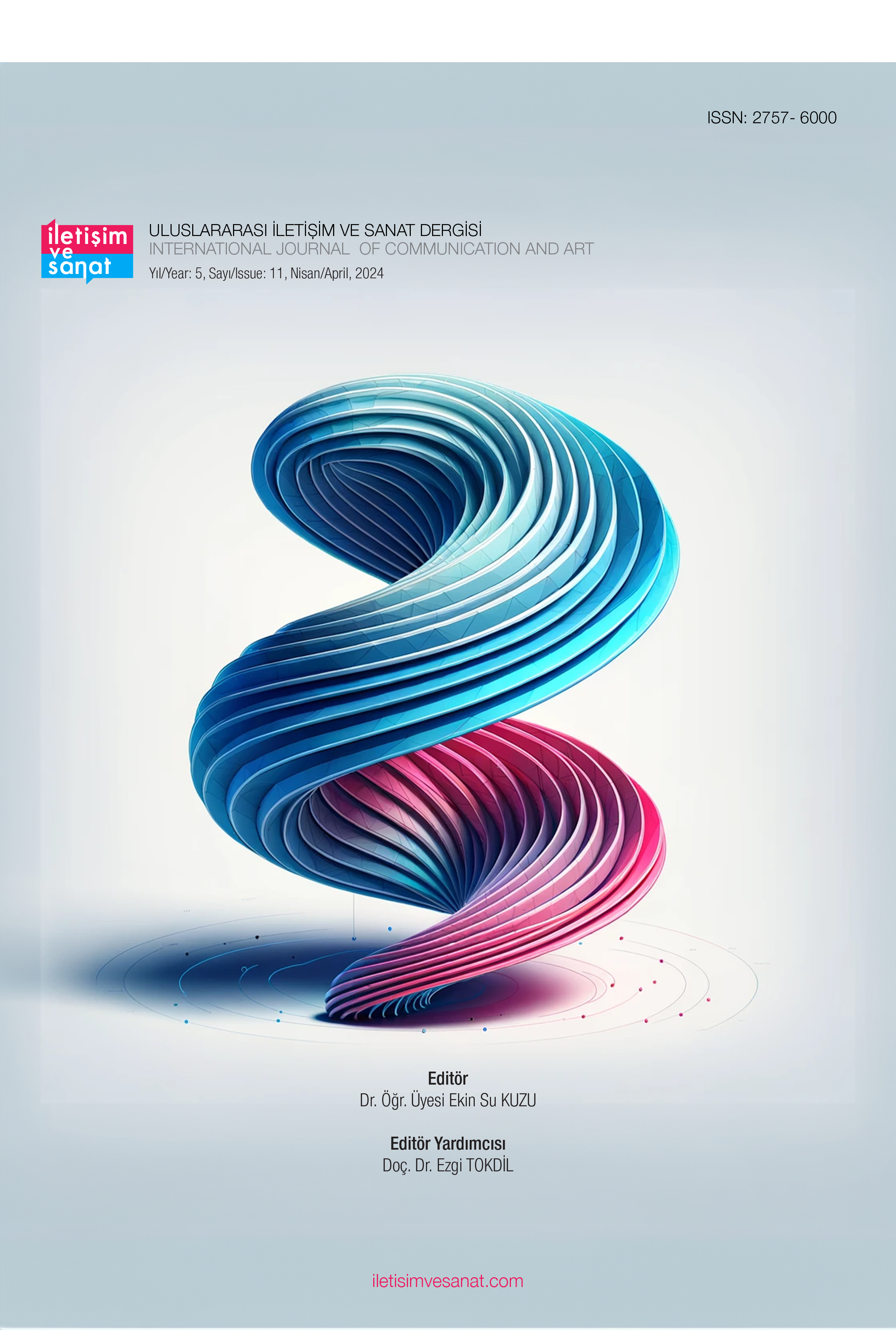Author :
Abstract
1960’lı yıllarda etkin bir sanat akımı olan Minimalizm, dönemin endüstri ürünü malzemelerle, minimalist sanatçıların özellikle heykel yapma pratiğini nesne, mekan, izleyici bağlamında önemli ölçüde etkilemiştir. Minimalist sanat akımında, sanatçı için geleneksel heykel sergileme tekniklerinin ortadan kalkması, sanatçılara daha fazla özgürlük sunarak endüstri ürünleri ve sınırsız malzeme seçenekleriyle sıradan mekanları sanat eseri olarak kullanma imkanı tanımıştır. Bu araştırmada, dönemin en önemli sanatçıları olan Frank Stella, Carl Andre, Dan Flavin, Donald Judd, ve Robert Morris’in minimalist eserleri incelenmiş ve konuyu en iyi yansıtan seçilmiş örnek eserler üzerinden değerlendirme yapılmıştır. Konu bağlamında Richard Serra’nın hayatı, özgün sanat dili ve “Zaman Meselesi” heykeli üzerinden okuma yapılarak minimalist sanatla birlikte izleyicinin sanat eseriyle değişen rölüne, mekan algısı ve endüstri ürünü malzemelerin heykel sanatında kullanımının önemine vurgu yapılmıştır. Sanatçı Richard Serra “Zaman Meselesi” adlı heykeli ile galeri mekanını sanat eserinin bir parçası haline getirmiştir. Bu sergileme tekniği, izleyicinin sanat eserine pasif bir gözlemci olarak bakma konumundan çıkmasını sağlayarak, esere etkileşimde bulunma ve hatta ara sıra müdahale etme yeteneği kazandırmıştır. Bu durum, izleyiciye farklı deneyimler sunmuştur. Sonuç olarak, galeri mekanları, sanat eserlerini sadece koruyan, sunan ve izleyici ile buluşturan güvenli alanlardan çıkarak, adeta endüstri ürünü hazır nesneler gibi birer sanat eseri halini almışlardır.Günümüzde hala devam eden bu durum, birçok sanat eserinin sanatçılar tarafından gerçekleştirilmesiyle galeri mekanının sanat eseri ile olan ilişkisini deneyimleme şansını sunmaktadır. Galeri mekanının sanat eseri ile etkileşimini vurgulayan bu sergileme tekniği, diğer sanat akımları, sanatçılar ve eserler üzerinde yapılan incelemelerde de geçerli olabilir. Bu nedenle, günümüz sanatını anlamak ve değerlendirmek için, mekana özgü sanat uygulamalarına ilgi duyan sanatçılara, sanat eğitmenlerine ve öğrencilere bir yöntem olarak önerilebilir. Araştırmada nitel araştırma yöntemlerinden döküman analizi kullanılmıştır. Literatürdeki kaynaklar, eser inceleme ve interaktif ortamdaki bilgiler araştırmanın amacına yönelik bütünlük sağlayacak şekilde incelenmiştir.
Keywords
Abstract
Minimalism, an influential art movement in the 1960s, significantly impacted the practice of minimalist artists, particularly in sculpture, using industrial materials of the time, in the context of object, space, and audience. In the Minimalist art movement, the elimination of traditional sculpture display techniques provided artists with more freedom, allowing them to use ordinary spaces as works of art with industrial products and limitless material options. This research examines the minimalist works of the era's most important artists, namely Frank Stella, Carl Andre, Dan Flavin, Donald Judd, and Robert Morris. The evaluation is conducted through selected exemplary works that best reflect the subject. In the context of this topic, Richard Serra's life, unique artistic language, and the sculpture "A Matter of Time" are explored to emphasize the changing role of the viewer with Minimalist art, the perception of space, and the importance of using industrial materials in sculpture. Artist Richard Serra transformed the gallery space into an integral part of the artwork with his sculpture titled "Time Matter". This exhibition technique empowers the viewer to transition from a passive observer of the artwork to an active participant, encouraging engagement and occasional intervention in the artistic experience. This situation has provided the viewer with different experiences. In conclusion, gallery spaces have evolved from secure areas that merely preserve, present, and bring together artworks to becoming art pieces themselves, resembling ready-made industrial objects. This ongoing trend offers the opportunity to experience the relationship between gallery space and artwork through the creation of many artworks by artists. The exhibition technique, which underscores the interaction between the gallery space and the artwork, holds potential for examining other art movements, artists, and works. Consequently, it is a valuable method to recommend for artists, art educators, and students interested in site-specific art practices, providing a means to comprehend and assess contemporary art. The research employed document analysis as a qualitative research method. Sources in the literature, artwork examinations, and information in interactive environments were scrutinized to maintain integrity in achieving the research's purpose.
